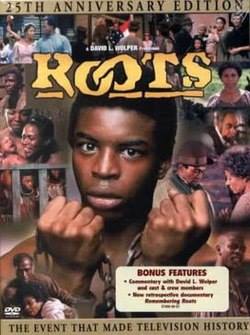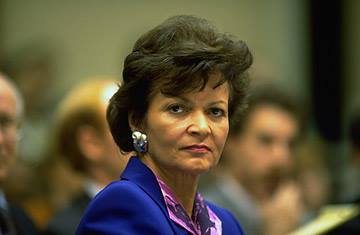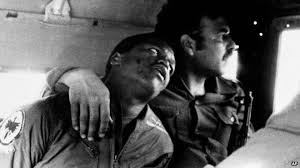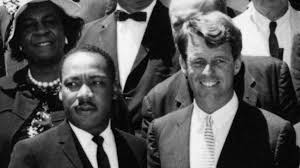GM – FBF – When you are enthusiastic about what you do, you feel
this positive energy. It’s very simple.
Remember – “The use of energy for all Americans in our
future is combunding upon, the use of energy Americans are usuig today” –
Hazel Rollins Reid O’Leary
Today in our History – January 22, 1993 – The first and only
woman to hold the position of U.S. Secretary of Energy, Hazel Rollins Reid was
born May 17, 1937 in Newport News, Virginia. During this time of public school segregation,
Reid’s parents, hoping for better schooling opportunities, sent their daughter
to live with an aunt in New Jersey. There Reid attended a school for
artistically gifted students.
Reid entered Fisk University in Nashville, Tennessee in 1955 and
graduated with honors four years later. She was elected to Phi Beta Kappa
National Honor Society at Fisk. Seven years later she received a law degree
from Rutgers University and soon became an attorney in the New Jersey State
Attorney General’s Office.
By the early 1970s Reid moved to Washington, D.C., where she
became a partner at Coopers and Lybrand, an accounting firm. Soon she joined
the Gerald Ford Administration as general counsel to the Community Services
Administration which administered most of the federal government’s anti-poverty
programs. President Ford later appointed Reid director of the Federal Energy
Administration’s Office of Consumer Affairs. In this position she became well
known as a representative of the concerns of consumers who challenged the power
and influence of the major energy producers.
In 1977, President Jimmy Carter appointed Reid to head the
Department of Energy’s Economic Regulatory Administration. Her agency included
more than 2,000 employees who enforced price controls on numerous forms of
energy. At this time she successfully lobbied Congress to pass the Fuel Use
Act, which decreased the demand for natural gas and developed conservation
programs that assisted low-income residents.
While working for the Carter Administration, Reid met her future
husband, John F. O’Leary, who was at the time the nation’s deputy energy
secretary. The two married in 1980 and together left the department to
establish and manage their own energy-consulting firm, O’Leary Associates.
In 1989, following the death of her husband, Hazel O’Leary went
to work for Northern State Power Company, a Minnesota utility, as executive
vice president for environmental and public affairs and then president of its
natural gas division. In 1992 President-elect Bill Clinton announced that he
would nominate O’Leary to be Secretary of the U.S. Department of Energy. She
would become the second woman and third African American nominated to the
Clinton Cabinet.
On January 22, 1993, Hazel Rollins Reid O’Leary became the
seventh U.S. Secretary of Energy. She would direct the 20,000 employees of the
agency and be the principal architect of the Clinton energy policy which
emphasized both conservation and innovation.
While in office O’Leary led the effort to find safer ways to
dispose of atomic waste. She gained Congressional approval to convert one of
three national nuclear weapons design laboratories into a research facility to
study technologically advanced environmental cleanup practices. O’Leary also
opposed increases in energy taxes.
Since 2002, Hazel O’Leary has
served as President of Fisk University, her alma mater. She remains an avid
supporter of environmentalism. She works with a variety of non-profit
organizations including the World Wildlife Fund, Morehouse College and The
Andrew Young Center of International Development. Recesrch more about this
great American and tell your babies. Make It A Champion day!




